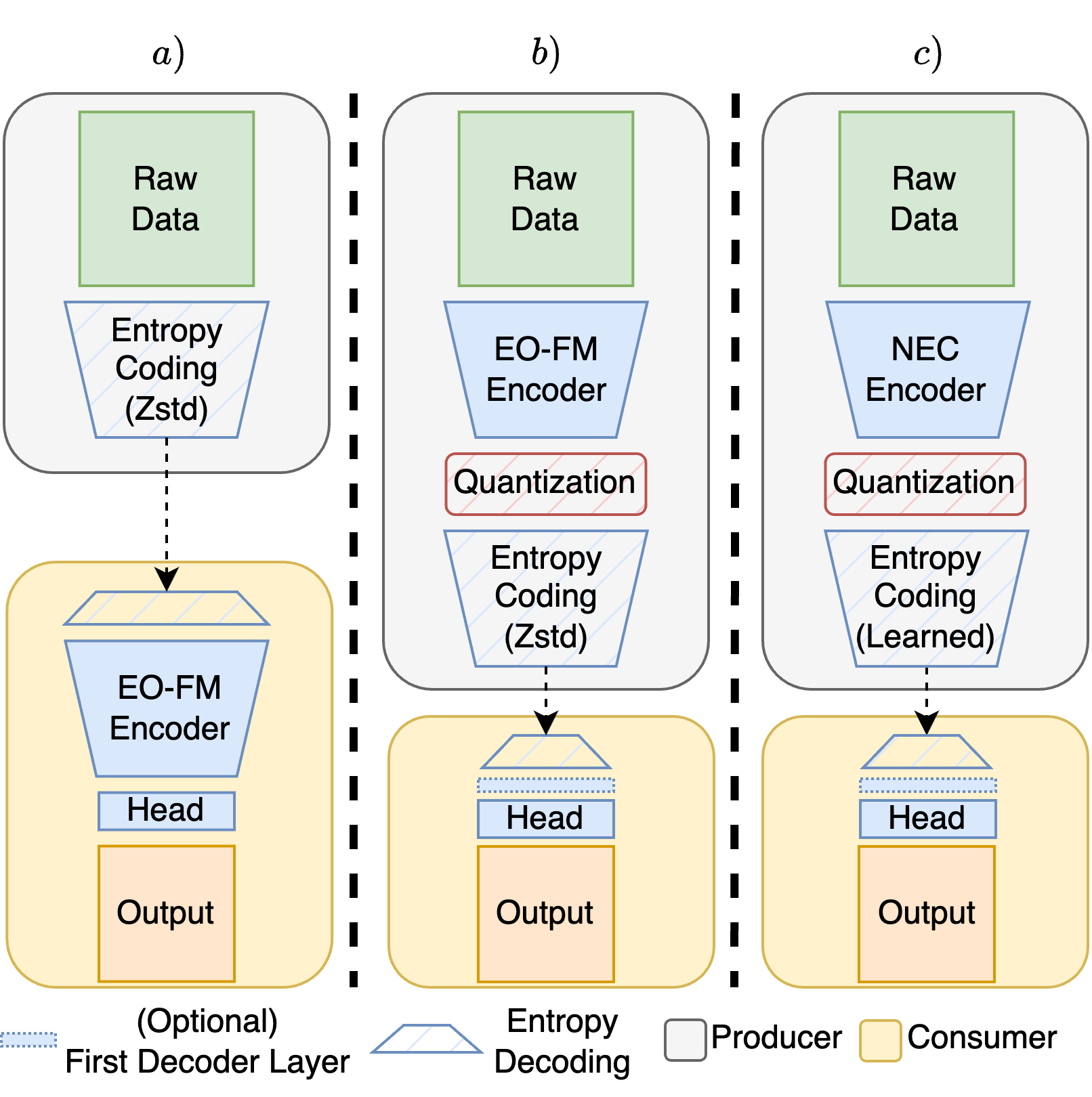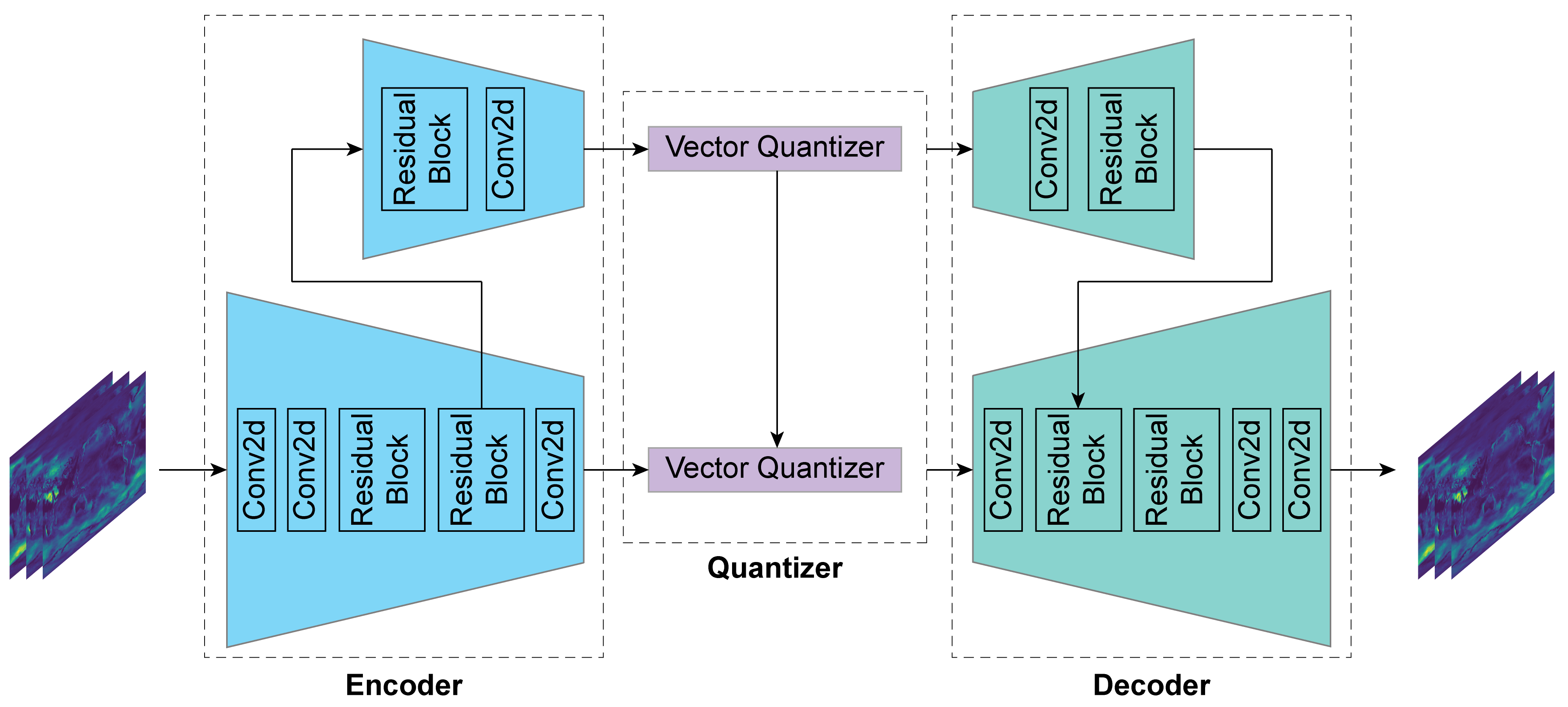Neural Embedding Compression For Efficient Multi-Task Earth Observation Modelling

0

Sign in to get full access
Overview
- This paper proposes a method for compressing neural network embeddings to enable efficient multi-task learning for Earth observation modeling.
- The key idea is to use a compression technique called matrix factorization to reduce the size of the embeddings, allowing the model to be deployed on resource-constrained devices.
- The authors evaluate their approach on multiple Earth observation tasks and show that it can maintain high accuracy while significantly reducing the model size.
Plain English Explanation
Imagine you have a large neural network model that can perform various tasks related to analyzing satellite or aerial imagery of the Earth. This model might have millions of parameters, making it computationally expensive and difficult to deploy on devices with limited resources, like smartphones or drones.
The researchers in this paper came up with a way to compress the internal representations, or "embeddings," used by the neural network. By applying a mathematical technique called matrix factorization, they can shrink the size of these embeddings without losing too much of the model's performance.
The key insight is that many of the features the neural network learns to extract from the Earth observation data are actually quite similar across different tasks, like estimating vegetation cover, detecting roads, or mapping urban areas. By identifying and exploiting these shared patterns, the researchers can create a more efficient model that can still handle multiple tasks well, but with a much smaller overall size.
This compression approach could be especially valuable for applications where the model needs to run on devices with limited computing power, like smartphones or small drones. By reducing the model size, it becomes possible to deploy these powerful AI systems in a wider range of real-world scenarios, from precision agriculture to environmental monitoring.
Technical Explanation
The authors propose a neural embedding compression (NEC) method to enable efficient multi-task learning for Earth observation modeling. The core idea is to apply matrix factorization to the embedding layers of a multi-task neural network, which can significantly reduce the model size while preserving task performance.
Specifically, the authors first train a multi-task neural network with shared convolutional layers and task-specific heads. They then decompose the embedding matrices in this network using low-rank matrix factorization, replacing the original embeddings with a smaller set of basis vectors and corresponding coefficients.
To evaluate their approach, the authors assess performance on four Earth observation tasks: land cover classification, semantic segmentation, building footprint extraction, and road network extraction. They compare the compressed NEC models to the original multi-task networks, as well as to separately trained single-task models.
The results show that the NEC models can achieve comparable or even better performance than the baseline models, while reducing the overall model size by 50-90%. This compression allows the models to be efficiently deployed on resource-constrained devices like edge computing platforms.
Critical Analysis
The NEC approach presented in this paper is a clever way to leverage the inherent redundancy in multi-task neural networks to achieve significant model compression. By identifying and exploiting the shared features across tasks, the authors are able to reduce the model size without sacrificing too much predictive performance.
One potential limitation is that the matrix factorization technique may not be able to capture all the nuanced relationships in the original embeddings, particularly for more diverse or unrelated tasks. The authors acknowledge this and suggest exploring other compression methods as future work.
Additionally, the evaluation is limited to a specific set of Earth observation tasks. It would be interesting to see how well the NEC approach generalizes to other multi-task settings, such as natural language processing or computer vision problems beyond remote sensing.
Overall, this research demonstrates an effective strategy for improving the efficiency of complex deep learning models, which could have important implications for deploying advanced AI systems in real-world applications with resource constraints.
Conclusion
This paper introduces a neural embedding compression (NEC) method that enables efficient multi-task learning for Earth observation modeling. By applying matrix factorization to compress the embedding layers of a multi-task neural network, the authors are able to significantly reduce the model size while maintaining high performance across multiple tasks.
The results show that the NEC approach can achieve comparable or better accuracy compared to baseline models, while reducing the overall model size by 50-90%. This compression allows the models to be efficiently deployed on resource-constrained devices, opening up new possibilities for the use of advanced AI systems in real-world applications like precision agriculture, environmental monitoring, and urban planning.
The NEC technique represents an important step forward in making complex deep learning models more practical and accessible, particularly in domains where computational resources are limited. As the authors suggest, further research into other compression methods and evaluations on a wider range of tasks could help expand the applicability of this approach even further.
This summary was produced with help from an AI and may contain inaccuracies - check out the links to read the original source documents!
Related Papers


0
Neural Embedding Compression For Efficient Multi-Task Earth Observation Modelling
Carlos Gomes, Thomas Brunschwiler
As repositories of large scale data in earth observation (EO) have grown, so have transfer and storage costs for model training and inference, expending significant resources. We introduce Neural Embedding Compression (NEC), based on the transfer of compressed embeddings to data consumers instead of raw data. We adapt foundation models (FM) through learned neural compression to generate multi-task embeddings while navigating the tradeoff between compression rate and embedding utility. We update only a small fraction of the FM parameters (10%) for a short training period (1% of the iterations of pre-training). We evaluate NEC on two EO tasks: scene classification and semantic segmentation. Compared with applying traditional compression to the raw data, NEC achieves similar accuracy with a 75% to 90% reduction in data. Even at 99.7% compression, performance drops by only 5% on the scene classification task. Overall, NEC is a data-efficient yet performant approach for multi-task EO modelling.
Read more7/11/2024


0
Compressed learning based onboard semantic compression for remote sensing platforms
Protim Bhattacharjee, PEter Jung
Earth observation (EO) plays a crucial role in creating and sustaining a resilient and prosperous society that has far reaching consequences for all life and the planet itself. Remote sensing platforms like satellites, airborne platforms, and more recently dones and UAVs are used for EO. They collect large amounts of data and this needs to be downlinked to Earth for further processing and analysis. Bottleneck for such high throughput acquisition is the downlink bandwidth. Data-centric solutions to image compression is required to address this deluge. In this work, semantic compression is studied through a compressed learning framework that utilizes only fast and sparse matrix-vector multiplication to encode the data. Camera noise and a communication channel are the considered sources of distortion. The complete semantic communication pipeline then consists of a learned low-complexity compression matrix that acts on the noisy camera output to generate onboard a vector of observations that is downlinked through a communication channel, processed through an unrolled network and then fed to a deep learning model performing the necessary downstream tasks; image classification is studied. Distortions are compensated by unrolling layers of NA-ALISTA with a wavelet sparsity prior. Decoding is thus a plug-n-play approach designed according to the camera/environment information and downstream task. The deep learning model for the downstream task is jointly fine-tuned with the compression matrix and the unrolled network through the loss function in an end-to-end fashion. It is shown that addition of a recovery loss along with the task dependent losses improves the downstream performance in noisy settings at low compression ratios.
Read more9/4/2024


0
Hierarchical Autoencoder-based Lossy Compression for Large-scale High-resolution Scientific Data
Hieu Le, Jian Tao
Lossy compression has become an important technique to reduce data size in many domains. This type of compression is especially valuable for large-scale scientific data, whose size ranges up to several petabytes. Although Autoencoder-based models have been successfully leveraged to compress images and videos, such neural networks have not widely gained attention in the scientific data domain. Our work presents a neural network that not only significantly compresses large-scale scientific data, but also maintains high reconstruction quality. The proposed model is tested with scientific benchmark data available publicly and applied to a large-scale high-resolution climate modeling data set. Our model achieves a compression ratio of 140 on several benchmark data sets without compromising the reconstruction quality. 2D simulation data from the High-Resolution Community Earth System Model (CESM) Version 1.3 over 500 years are also being compressed with a compression ratio of 200 while the reconstruction error is negligible for scientific analysis.
Read more5/8/2024
🎯

0
Embedding Compression for Efficient Re-Identification
Luke McDermott
Real world re-identfication (ReID) algorithms aim to map new observations of an object to previously recorded instances. These systems are often constrained by quantity and size of the stored embeddings. To combat this scaling problem, we attempt to shrink the size of these vectors by using a variety of compression techniques. In this paper, we benchmark quantization-aware-training along with three different dimension reduction methods: iterative structured pruning, slicing the embeddings at initialize, and using low rank embeddings. We find that ReID embeddings can be compressed by up to 96x with minimal drop in performance. This implies that modern re-identification paradigms do not fully leverage the high dimensional latent space, opening up further research to increase the capabilities of these systems.
Read more5/24/2024